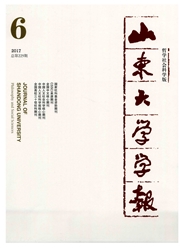

 中文摘要:
中文摘要:
传统的政府管制理论是建立在主流经济学完全理性或者理性预期的遍历性假设之上,因将风险与根本不确定性等同起来,积极倡导自由市场,看不到任何市场失灵现象和政府管制的有效性。一旦走进非遍历性和根本不确定性的世界里,这些主流经济学的方案就不合适了,而后凯恩斯经济学提出非遍历性理论,超越斯密“看不见的手”机制,再次回归市场不稳定性和政府管制有效性,更好地理解政府管制的新原则---在于降低根本无法消除的不确定性范围,进一步弥合经济理论与现实世界之间的巨大脱节,对于深化中国特色的社会主义市场经济体制来说具有重要指导意义。
 英文摘要:
英文摘要:
The traditional government regulation theory which is on the ergodicity hypothesis of perfect rationality and rational expectations of the mainstream economics fails to see any market failure and the effect of government regulation .So it just equals the risk to fundamental uncertainty concepts and proposes actively free market . Those mainstream economics concepts do not work anymore in the world full of ergodicity and uncertainty . Then , the Post Keynesian Economics proposes non-ergodicity theory and creates a new theoretical model and government regulation under uncertainty . It provides new principle for government regulation , that is , to decrease the fundamental uncertainty and bridge the great gap between the economic theory and the real world , which is of great guiding significance for the market economic system reform with Chinese characteristics .
 同期刊论文项目
同期刊论文项目
 同项目期刊论文
同项目期刊论文
 期刊信息
期刊信息
